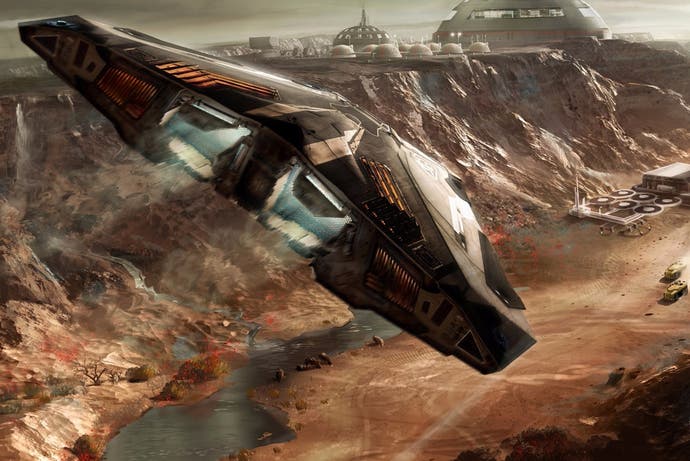Is Elite Dangerous on PlayStation the definitive console version?
Pro powers ahead but Xbox One has better performance than base PS4.
Frontier Developments' celebrated Elite Dangerous arrived on PlayStation 4 recently, joining the already established PC and Xbox One versions. There's a reason we've held off coverage until now: the PS4 build launched with v-sync disabled, resulting in a sub-optimal presentation. Frontier asked us to wait for a hotfix to roll out, which duly arrived on Monday. The outlook improves with the new update in place but it's still not quite right.
At the base level, both the base PS4 and Xbox One versions of Elite Dangerous operate using a sub-set of the PC's expansive range of graphics options, with all versions delivering a native 1080p resolution. PlayStation 4 Pro is also supported with two modes - quality and performance - but again, 1080p is the final resolution here, with no higher resolution functionality integrated yet. We have parity in resolution then, but there are differences in visual settings deployed for each device. Using the training missions as the basis for like-for-like comparisons, the Pro's performance mode offers the exact same visual set as the base PS4 version of the game - as you might expect, it's simply running the same visuals at a significantly higher frame-rate.
In turn, the Xbox One game looks much the same, the most immediate difference coming from terrain detail. Distant detail is better defined on PS4, compared to Xbox One's more simplified rendition. However, the Microsoft platform enjoys a small but significant advantage of its own: its anti-aliasing solution is a closer match for PC's top setting - SMAA - while base PS4 and Pro's performance mode opt for the less impressive FXAA, which adds a distinct blur to texture detail. Elsewhere, PS4 and Xbox One are very close with just small variations: shadow quality is matched for example, but object draw distance has an advantage on Sony's hardware.
On balance, PS4 does have the edge in pushing higher visual settings, though it's let down a touch by its lower quality anti-aliasing. It's possible there's more going on behind the hood too if we dig deeper, but the general impression is that most differences are hard to pick out - especially as the vast majority of the game plays out in deep space. In terms of the overall visual make-up of the game, there's no doubt that this is a good-looking game - often beautiful, in fact - and the overall scale of the differences is slight. It's unlikely that anyone will feel shortchanged here.
Performance is another issue though. On the positive side, 60fps is the preferred target for all versions, and with the latest 1.3 update in place, everything runs with v-sync enabled on PS4, more in line with Xbox One. However, the evidence does seem to suggest that the Microsoft platform benefits from triple-buffering in place, while the PS4 and Pro versions use double-buffering, leading to some surprising results in head-to-head performance comparisons.
Navigating through complex space stations, frame-rate buckles on both machines, but remarkably, Xbox One is consistently in the lead in performance, seemingly capable of reaching the limits of GPU performance. Meanwhile, the PlayStation 4 game dips down hard - dropping from 60fps to 30fps under stress points - a signature impact of double-buffer v-sync. In practice, this means that we can see Xbox One delivering a 40fps performance level in these areas, with PS4 running 10fps slower. It's not particularly ideal in either case, but for intricate docking manouevres, it'll be Xbox One that gives you improved visual feedback and controller response. It's a similar story with planetary landings - sudden drops to 30fps territory on PS4, while Xbox One fluctuates between 30 to 50fps. Bearing in mind the Sony hardware's more capable GPU, this is an unexpected result.


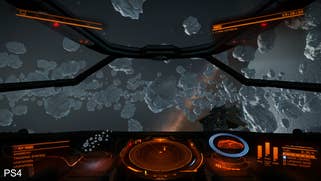
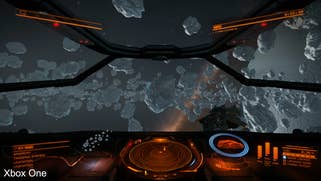

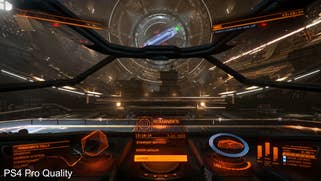
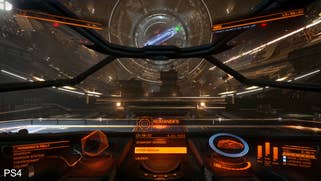
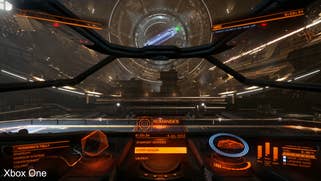
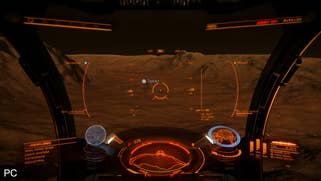
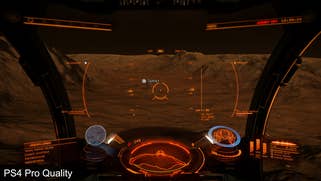
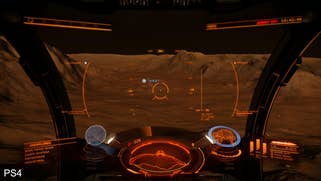
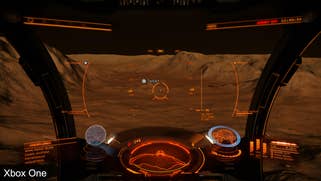


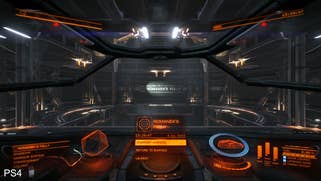
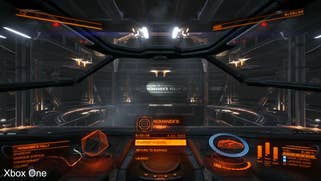
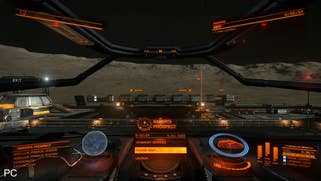
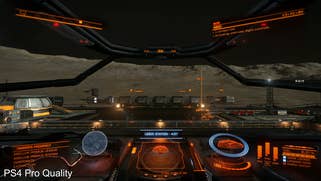
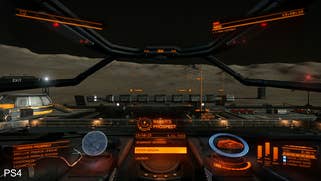

An optional 30fps cap might be preferable, but the fact is that the majority of gameplay plays out in space, where there are far fewer deviations from the intended, silky-smooth 60fps. Dog-fighting in space runs more or less as it should, only hiccupping occasionally from its intended target. The performance differences are apparent then, mitigated mostly by the fact that space-based gameplay is fine overall. Those who play the game with a trading emphasis are less likely to be bothered by it, compared to those who focus more on planetary exploration.
PlayStation 4 Pro offers two interesting render modes meanwhile: if you want to push the boat out a bit, the quality mode changes ramps up the visual settings to make for a much closer match to the PC version. Just about every setting is dialled up, from level of detail, effects and shadow quality, the addition of ambient occlusion, higher-grade depth of field, and much more.
In fact, the anti-aliasing gets a boost too, going from the FXAA we have on the performance mode, to the SMAA we have on PC. Another stand-out upgrade is in the terrain detail - there's much more of it, backed by a big improvement in texture filtering quality. Next to the performance mode, or even a regular PS4, there's simply more definition to the landscape, and texture details just pop, even at range.
Inevitably, this doesn't come for free, and for frame-rates you're looking at a stark difference between the two PS4 Pro modes. With performance mode selected, the graph line in our performance tools does a reasonable job of sticking to 60fps. The only area where it really struggles is while flying close to a planet surface - putting you at the 50fps mark. Generally speaking though, it's a marked improvement over the quality mode, which plays out much like a regular PS4, where for the stress points you're looking at something approaching a fixed 30fps experience.
We started out our work playing on quality mode, but ended up switching to performance mode simply because it offers the closest we're going to get to a locked 60fps on console - but stacked up against the Xbox One results, there's the feeling that Pro should be delivering more. And certainly on base PS4, we hope the v-sync implementation can be improved to match its Xbox sibling. As things stand, the console ports do the job just fine, but don't have the consistent fluidity you're only going to get on PC - which remains the premier Elite Dangerous experience.
